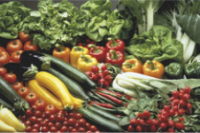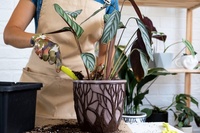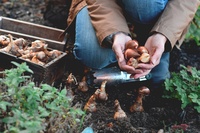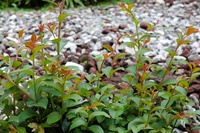
Dutch evolution
The Dutch salad industry has consistently moved with the times to remain at the forefront of European supply. David Shapley charts its progress over time
The Dutch are often held up across Europe as having one of the most successful export-orientated horticultural blueprints. Hard working, technically efficient, while at the same time practically adventurous, growers have achieved a high degree of quality and standardisation.
Year ago, flying towards the ever-expanding Schipol Airport, passengers marvelled at the sea of glasshouses twinkling in the sun which covered the Westland, and in many cases glowed at night from lights to keep the plants growing.
Times may have changed, but post war the industry was welded together through the Central Bureau of Dutch Auctions (CBT), making it collectively a major European supplier. Initially, it even had its own offices in the old Covent Garden.
It was, in effect, a statutory growers’ co-operative controlling exports. Sales went through the traditional auction system based on exporters bidding against the clock on a falling price. But it was the latter who operated a high-octane schedule buying daily in the morning and packing and shipping to European and Scandinavian customers that night.
Before the UK ferry services expanded and lorries poured across through the east coast and Channel ports, several shippers chartered cargo vessels. One of my first trips to the Netherlands as a student in the fifties was on the Geestdyk, shuttling across from Boston to Maassluis carrying live calves on the outward journey and returning with tomatoes. Other companies took to the skies and lettuce was flown in daily. Tomatoes, cucumbers and lettuce were the original mainstays. Dutch growers were among the first to adopt hydroponics for tomatoes. Continuous lettuce production on moving beds followed by post-harvest air cooling to increase shelf life when it arrived at auction set the pace.
It was not long before other crops began to emerge. In the seventies they can take much of the credit for introducing peppers to the British public. While red, green, orange and yellow varieties remain the favourites today, other colours ranging from brown and black to purple and white became available.
The CBT also encouraged the British to follow the Dutch habit of eating radish as a snack. For many years a plastic cone-shaped presentation was part of UK retailers’ weekly market shopping list. As the consumer demand for new tastes continued to increase the CBT’s response was literally to search the world, sending its executives as far as India, China and Japan, touring their wholesale markets.
Incredibly, the delegation returned after a six-month voyage of discovery with over 250 potential new vegetable and salad crops to be evaluated at the world famous Naaldwijk vegetable station, of which at least 20 or so became commercially successful.
It was also active working with both exporters and importers to establish its strong national brand on the markets. “Holland” was supported by the logo of a traditionally costumed Dutch girl, complete with starched hat and clogs.
The majority of sales up until the eighties were still through traditional greengrocers, so there was ample point of sale available such as banners, posters and price tickets distributed both direct to the shops or mailed in promotional packs. But the supermarkets were becoming increasingly dominant.
As the multiples took a larger and larger share of the UK market it was inevitable that the Dutch system came under pressure.
Because the auctions served the whole of Europe prices fluctuated, while retailers were looking for a far longer-term consistent level in order to plan ahead.
For some time the CBT sought to counteract this by operating a form of forward buying, but retailers again had other ideas in mind. The attraction was to work far more closely with growers for several reasons.
Then they could programme, negotiate price, impose their own quality standards beyond those set out by the European Community, and influence the varieties which were being grown and even their packaging. With the world as their market, if they could not simply procure what they wanted, many began to look elsewhere. Over this period alternative sourcing became more apparent from countries such as Morocco and Italy. The UK indirectly received a shot in the arm, which assisted its later recovery.
The vast Dutch industry of course responded, proving again to be resilient by altering its commercial shape and structure, leading to how it remains a major supplier today. —




